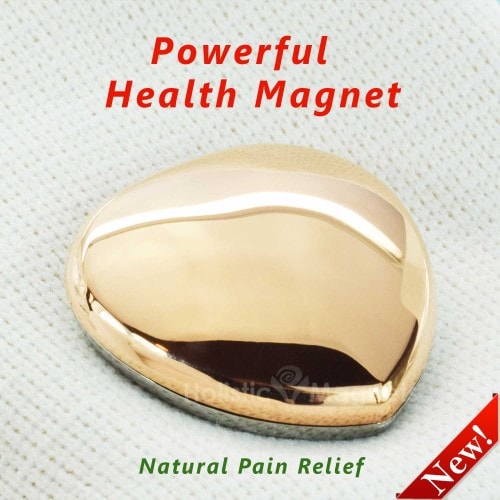Blog
Magnetic Therapy – How To Choose The Right Magnet for Pain Relief
 Millions of people have used therapeutic magnets for pain relief. In fact, a growing number of medical doctors and health practitioners are utilizing magnetic therapy as a complementary treatment. In addition, numerous studies have shown that magnets can have a therapeutic effect on injured areas of the body. Research has also shown that magnetic fields can improve blood circulation, promote wound healing, stimulate bone growth, reduce pain and alleviate symptoms associated with arthritis.
Millions of people have used therapeutic magnets for pain relief. In fact, a growing number of medical doctors and health practitioners are utilizing magnetic therapy as a complementary treatment. In addition, numerous studies have shown that magnets can have a therapeutic effect on injured areas of the body. Research has also shown that magnetic fields can improve blood circulation, promote wound healing, stimulate bone growth, reduce pain and alleviate symptoms associated with arthritis.
With a growing demand for magnetic therapy products, consumers should be aware of what to look for when purchasing this item. The following are factors to assess when choosing the right magnet for your needs.
Type:
The most powerful therapeutic magnets are Neodymium. These are considerably more powerful than ceramic magnets.
Grade:
Neodymium magnets are graded by the materials they are made from. They range in strength from N24 to N55. The higher the grade (the number following the ‘N’), the stronger the magnet.
Surface gauss vs. Core gauss:
Magnets vary in strength. It’s important to remember that stronger magnets penetrate more deeply than weak magnets. Magnets are rated based on the intensity of the magnetic field it produces, which is measured in gauss. For instance, a typical refrigerator magnet has a surface rating of 10 gauss. Standard therapeutic magnets can have a surface range between 200 to 2,000 gauss. Also, the reading at the surface of the magnet is different from the reading at its core. In other words, a magnet that is 10,000 gauss at its core may have a considerably less gauss rating at its surface. Pay careful attention to this because some vendors will provide you with only the core gauss rating, which is misleading. To better understand the strength of a magnet, you will need to know the surface gauss rating as well.
Thickness and Diameter:
Choosing a magnet with a larger diameter and greater thickness will produce a stronger magnetic field sufficient to penetrate deep into the injured area. However, larger and thicker magnets are extremely powerful and can be dangerous if not handled properly.
Unipolar vs. Bipolar:
In general, the magnets that people should be purchasing are unipolar. They are flat-surface magnets that are magnetized along the direction of the surface. Note that horseshoe and bar magnets are not suitable for therapeutic application since they are magnetized at both ends of the U-shape.
Stacking:
Several magnets can be stacked for increased gauss strength and, therefore, greater effectiveness. The thicker the magnet, the greater the depth of penetration. The down side to this is that, with increasing thickness, the magnet becomes more uncomfortable to wear.
Other Considerations:
The laws of physics indicate that magnetic field strength drops sharply with distance that is inversely proportional with the cube of the distance. In short, this means therapeutic magnets are most effective when placed directly on the skin. There are a number of products on the market that contain magnets such as back supports, wrist supports, knee braces and various orthodics. Due to the padding of these products, the strength of the magnets are diminished. Thus, to experience maximum penetration, one should apply therapeutic magnets directly on the skin so long as they do not have allergies to the metal.
Tips & Warnings:
- The FDA recognizes therapeutic magnets as generally safe and harmless.
- Therapeutic Magnets should not be used near sensitive medical equipment or implants such as pacemakers, implanted defibrillators, infusion pumps, aneurysm clips, or implanted neurostimulator devices. Because these magnets will adhere to metal you should be sensitive when placing them in contact with metal cookware or utensils. Avoid using magnets near sensitive mechanical or electrical equipment.
- The content of this article is not intended to replace any instructions, prescriptions or directions prescribed by your doctor.



I was very confused as to how to choose the right magnet for therapy, but your amazing article made it possible. Recently I bought a new therapy magnet and I am so happy that it’s working properly because of your amazing reviews and guides while purchasing. Thanks a lot for sharing..!
Thank you for the wonderful article